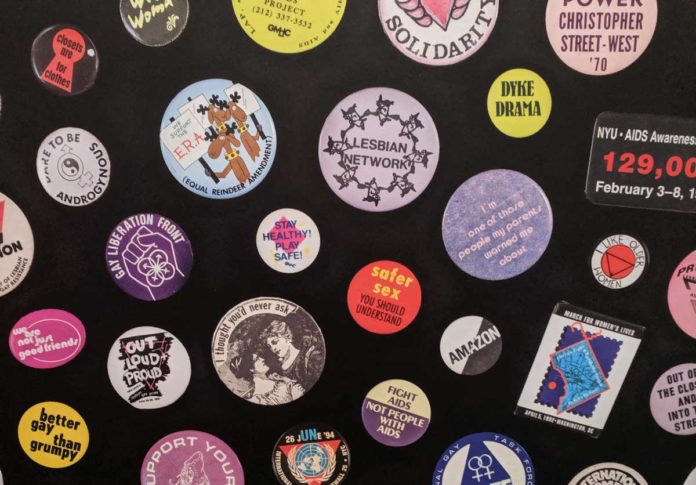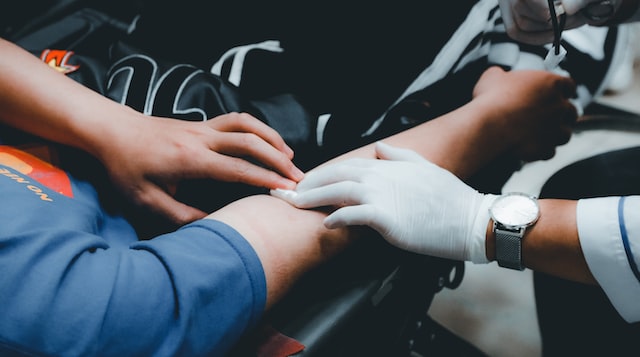A display at New York Historical Society – Margaret Middleton
Happy Pride from Belfast! The rainbow flag is flying all over City Centre and a week of queer-themed events has begun in the lead-up to Saturday’s parade. Whether you live in a city that celebrated in June like Edinburgh or will celebrate in August like Cardiff, it’s likely too late to plan your museum’s Pride 2022 celebration. But it’s the perfect time to start planning for next year. Here are some considerations for you to keep in mind as you make your preparations:
1. Call it Pride but don’t let it be a euphemism
First popularised in the 70s as Gay Pride, today the annual LGBTQ celebration that marks the anniversary of the Stonewall Riots is referred to simply as Pride. Though this shift is intended to make the celebration more welcoming to queer people who are not gay, its palatable non-specificity has caught on across queer and straight communities, driving its legibility into the mainstream. Some straight and cisgender people feel more comfortable with the innocuous term “Pride” and for them, it becomes a euphemism. Knowing this, I recommend going ahead and using the popular term Pride but when you write your description, be sure to include the acronym LGBTQ and use the words those letters stand for: lesbian, gay, bisexual, transgender, and queer. Let there be no mistake that your institution is proud to name the people Pride is for.
Similarly, use slogans and hashtags thoughtfully. “Love is love” and “love wins” were developed as marketing slogans for the campaign for the legalization of same sex marriage in the US. Though these slogans continue to be popular, they refer to only one aspect of queer life.
2. Invite participation from all staff but don’t expect queer colleagues to do all the work
If your public programming department is made up of straight and cisgender people, you may want to open up your Pride planning committee to all staff who want to participate. Use an open call to all your colleagues to avoid perpetuating any assumptions that only queer colleagues will want to participate or that you know who is queer and who isn’t.
3. Partner with local orgs, but make it an equitable relationship
Partnerships will help you build meaningful relationships with other organisations and leverage the goodwill they have built with their communities. This is a gift so be sure to listen to them and offer money and/or resources in return. Choose your partners wisely: no all-white groups, be sure they are trans-affirming, etc.
4. Connect your programming to your museum’s work and mission
To best connect with your audience and show your museum’s genuine interest in queer visitors, do not default to generic programming that could happen anywhere. Get creative and come up with something that fits your museum’s unique story. If you work at a science museum, make it about science. If you work at a history museum, make it about history. This will build trust and strengthen your relationship with your visitors.
5. Don’t take the politics out of Pride
Supporting queer people is a political statement. Pride began as a protest and it continues to be one because queer liberation is an ongoing project. There are people actively working right now to limit the rights and wellbeing of queer people in United Kingdom. Remember, it is not a demonstration of allyship to discount or disregard the prevalence of homophobia and transphobia today. Though you may personally find it unthinkable that your programming could be met with backlash, trust your queer colleagues when we say it is sadly predictable. Anticipate backlash from the public by preparing staff and planning your response. This may involve implementing a chain of response, creating an FAQ for staff and visitors, and drafting public statements of support. With luck, you will not have to put your preparations into practice but you can rest easy knowing you have sufficiently prepared and supported your staff.
6. Commit to internal work
If we waited until our organisations were perfect on queer-positive practice before taking on queer public programming, there would be none. That said, if you host a Pride event, show your long-term commitment to queer visitors and staff by improving your museum’s practice. Pick one actionable item to complete in the coming year.
Ideas:
- Host a queer inclusion training for staff (don’t just focus on front line staff- include all levels and make it mandatory)
- Do a gender-inclusive signage overhaul
- Interpret a queer story in the permanent exhibits
- Acquire an artwork by a queer artist or object of queer historical significance
- Add Mx. to forms that require a title (for visitors and staff)
- Add pronouns to name badges
Happy planning for Pride 2023! And don’t leave it at June: keep planning programming and exhibits on queer themes year round.
More reading: The Queer Inclusive Museum
About the author – Margaret Middleton
Margaret Middleton is an independent exhibit designer specializing in playful, inclusive learning environments and a museum consultant writing and conducting workshops on inclusive practice. Follow them on Twitter @magmidd, visit their website margaretmiddleton.com, and get in touch [email protected]







